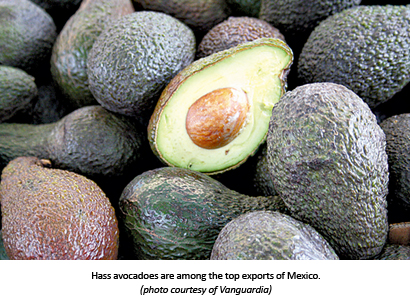After entering the U.S. market, from which it was banned for 87 years due to plant health problems, Mexico’s Hass avocado production has increased by almost 200 fold in the past fifteen years. In 1997, when Mexico was able to export to the U.S., there were 21 municipalities in Michoacan with 93,000 hectares of cultivated avocados, 76,000 of which were in production. Currently, Michoachan has more than 120,000 hectares of avocado and exports 1000 containers of it per week.
 The opening of the U.S. market, starting February 5, 1997, brought a rapid growth of avocado producers. Back then, there were 61 producers and five exporters located in the towns of Uruapan, Tancitaro, Salvador Escalante and Periban, who integrated the Association of Producers and Exporting Packers of Michoacan’s Avocado (APEEAM). Currently, there are 10,000 producers located in 29 municipalities.
The opening of the U.S. market, starting February 5, 1997, brought a rapid growth of avocado producers. Back then, there were 61 producers and five exporters located in the towns of Uruapan, Tancitaro, Salvador Escalante and Periban, who integrated the Association of Producers and Exporting Packers of Michoacan’s Avocado (APEEAM). Currently, there are 10,000 producers located in 29 municipalities.
Michoacán ranks first among the 28 states that produce American elPersea, with 85 percent of production. Last year it produced 193,570 million tons, 600,000 of which were allocated to the foreign market. Pro Aguacate’s president, David Ruiz, said that it was a crop that had no competition and that the orchards would continue to grow. According to him, the cultivated area of avocados, the most popular fruit in the international market, has increased 25 percent in the last five years.
The 12 million Mexican migrants have also helped to increase the taste for Mexican cuisine in the U.S. over the last decade. Thanks to them the guacamole has become the preferred snack in the Super Bowl (its consumption is estimated at 21,000 tons) and is heavily sought on May 5 for the Mexican celebrations on American soil (with a consumption of 1,500 tons).
Sources: Vanguardia (Spanish)
Freshplaza (English)
